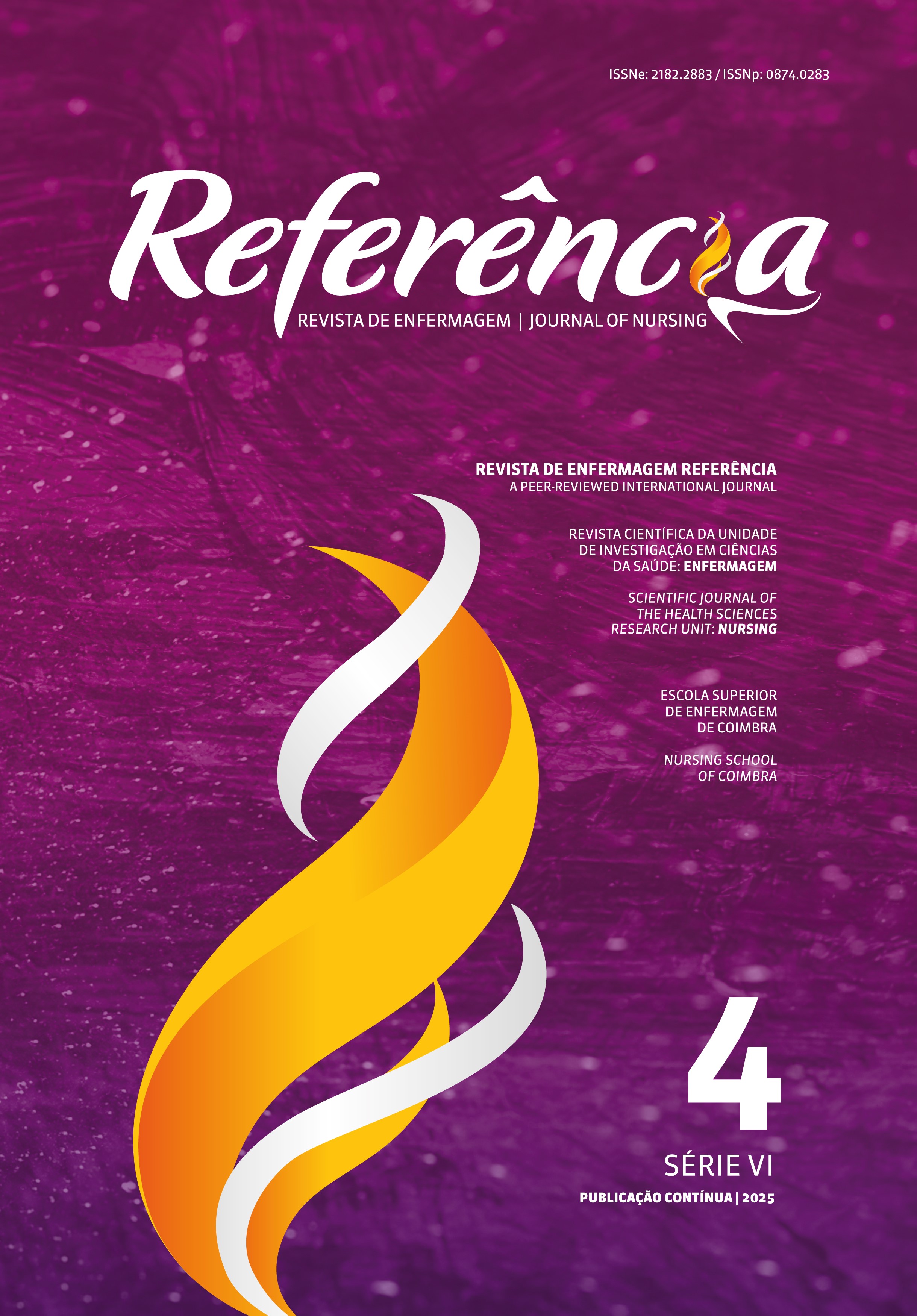The influence of the nursing practice environment on missed care and individualized care
DOI:
https://doi.org/10.12707/RVI22003Keywords:
nursing practice environment, person-centered care, missed care, quality of care, nursing researchAbstract
Background: The nursing practice environment (NPE) influences the quality of care, person-centered care, and patient safety. More specifically, providing safe care includes not leaving care left undone.
Objective: To analyze the influence of the NPE on missed care and individualized care.
Methodology: A quantitative, descriptive, and correlational study was conducted in three inpatient wards of an oncology hospital in Portugal. Nurses’ perceptions of the NPE were assessed using the Practice Environment Scale of the Nurse Work Index. Nurses were also asked to identify types of care missed during their last shift due to lack of time. Inpatients’ perceptions of individualized care were assessed using the Individualized Care Scale Patient.
Results: The sample consisted of 66 nurses and 40 inpatients. The overall NPE was rated as unfavorable. The ward with an environment in the favorable threshold reported less missed care. Inpatients perceived care as individualized.
Conclusion: The identified NPE may call into question the quality of care.
Downloads
References
Aiken, L. H., Sloane, D. M., Ball, J., Bruyneel, L., Rafferty, A. M., & Griffiths, P. (2018). Patient satisfaction with hospital care and nurses in England: An observational study. BMJ Open, 8(1), e019189. https://doi.org/10.1136/bmjopen-2017-019189
Amaral, A. F., Ferreira, P. L., & Lake, E. (2012). Validation of the Practice Environment Scale of the Nursing Work Index (PESNWI) for the Portuguese nurse population. International Journal of Caring Sciences, 5(3), 280–288.
Amaral, A. F., & Ferreira, P. L. (2013). Influência do ambiente de prática nos resultados dos cuidados de enfermagem. Revista de Investigação em Enfermagem, 2(5), 66–74.
Amaral, A. F., Ferreira, P. L., & Suhonen, R. (2014). Translation and validation of the Individualized Care Scale. International Journal of Caring Sciences, 7(1), 90–101. https://www.proquest.com/openview/5b148feffa16f81cf3cbd26fdd77877e/1?pq-origsite=gscholar&cbl=1606338
Braga, C, Jesus, É., & Araújo, B. (2018). RN4Cast study in Portugal: Nurses and care left undone. Journal of Hospital Administration, 7(2). 58–66. https://doi.org/10.5430/jha.v7n2p58
Chaboyer, W., Harbeck, E., Lee, B. O., & Grealish, L. (2021). Missed nursing care: An overview of reviews. The Kaohsiung Journal of Medical Sciences, 37(2), 82–91. https://doi.org/10.1002/kjm2.12308
Choi, J., & Boyle, D. K. (2014). Differences in nursing practice en among US acute care unit types: A descriptive study. International Journal of Nursing Studies, 51(11), 1441–1449. https://doi.org/10.1016/j.ijnurstu.2014.03.001
Ferreira, M. R., & Amendoeira, J. (2014). Estudo da adaptação e validação da escala ambiente de trabalho da prática de enfermagem para a realidade portuguesa. Revista Escola Enfermagem USP, 48(4), 690–697. https://doi.org/10.1590/S0080-623420140000400017
Fuentelsaz-Gallego, C., Moreno-Casbas, M. T., & González-María, E. (2013). Validation of the Spanish version of the questionnaire Practice Environment Scale of the Nursing Work Index. International Journal of Nursing Studies, 50(2), 274–280. https://doi.org/10.1016/j.ijnurstu.2012.08.001
Gurdogan, E. P., Findik, U. Y., & Arslan, B. K. (2015). Patients’ perception of individualized care and satisfaction with nursing care levels in Turkey. International Journal of Caring Sciences, 8(2), 369–275. http://www.internationaljournalofcaringsciences.org/docs/14_findic.pdf
Hessels, A. J., Flynn, L., Cimiotti, J. P., Cadmus, E., & Gershon, R. R. (2015). The impact of the nursing practice environment on missed nursing care. Clinical Nursing Studies, 3(4), 60–65. https://doi.org/10.5430/cns.v3n4p60
Kane, R. L., Shamliyan, T. A., Mueller, C., Duval, S., & Wilt, T. J. (2007). The association of registered nurse staffing levels and patient outcomes: Systematic review and meta-analysis. Medical Care, 45(12), 1195–1204. https://doi.org/10.1097/MLR.0b013e-3181468ca3
Jesus, É. J., Roque, S. M., & Amaral, A. F. (2015). Estudo RN4CAST em Portugal: Ambientes de prática de enfermagem. Revista Investigação em Enfermagem, 2(13), 26–44.
Lake, E. (2002). Development of the Practice Environment Scale & of the Nurse Work Index. Research in Nursing Health, 25(3), 176–188. https://doi.org/10.1002/nur.10032
Lake, E. T., Sanders, J., Duan, R., Riman, K. A., Schoenauer, K. M., & Chen, Y. (2019). A meta-analysis of the associations between the nurse work environment in hospitals and 4 sets of outcomes. Medical Care, 57(5), 353–361. https://doi.org/10.1097/MLR.0000000000001109
Neves, T. M., Parreira, P. M., Graveto, J. M., Rodrigues, V. J., & Domingos, J. P. (2018). Practice Environment Scale of the Nursing Work Index: Portuguese version and psychometric properties. Journal of Nursing Management, 26(7), 833–841. https://doi.org/10.1111/jonm.12606
Paiva, I. C., Amaral, A. F., & Moreira, I. M. (2021). Cuidados de enfermagem omissos: Perceção de enfermeiros de um hospital de oncologia português. Revista de Enfermagem Referência, 5(5), e20075. https://doi.org/10.12707/RV20075
Rodríguez-Martín, B., García-Camacha Gutiérrez, I., Caro-Alonso, P. A., Suhonen, R., & García-Camacha Gutiérrez, A. (2022). Individualised Care Scale-Nurse: Construct validity and internal consistency of the Spanish version. Scandinavian Journal of Caring Sciences, 36(2), 404–415. https://doi.org/10.1111/scs.13051
Tavares, J. P., Silva, A. L., Sá-Couto, P., Boltz, M., & Capezuti, E. (2017). Nurse perception of care of hospitalized older adults: A comparative study between northern and central regions of Portugal. Revista Latino-Americana Enfermagem, 25, e2757. https://doi.org/10.1590/1518-8345.0839.2757






